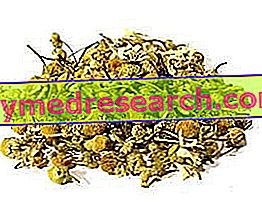
What is Temodal?
Temodal is a medicine that contains the active substance temozolomide. It is available in capsules (white and green: 5 mg; white and yellow: 20 mg; white and pink: 100 mg; white and blue: 140 mg; white and orange : 180 mg; white: 250 mg) and powdered for the preparation of a solution for infusion (drip into a vein).
What is Temodal used for?
Temodal is an anticancer medicine used in the treatment of malignant gliomas (brain tumors) in the following groups of patients:
- adults with newly diagnosed glioblastoma multiforme (a particularly aggressive type of brain tumor). Temodal is used first in conjunction with radiotherapy and later as a single agent (alone);
- adults and children from three years of age with malignant gliomas, such as glioblastoma multiforme or anaplastic astrocytoma, when the tumor returns or progresses after standard therapy. Temodal is used on its own in these patients.
The medicine can only be obtained with a prescription.
How is Temodal used?
Treatment with Temodal should be prescribed by a doctor experienced in the treatment of brain tumors.
The dose of Temodal depends on the body surface (calculated based on the height and weight of the patient) and ranges from 75 to 200 mg per square meter, once a day. Both the dosage and the number of doses depend on the type of tumor that must be treated, if the patient has been treated previously, if Temodal is used alone or in combination with other therapies, and by the patient's response to treatment. Temodal capsules should be taken without food. If the infusion solution is taken, it should be administered over a period of 90 minutes.
Furthermore, patients may need to take medications that prevent vomiting prior to administration. Temodal should be used with caution in patients with severe liver problems or kidney failure.
For more information, see the summary of product characteristics (also included with the EPAR).
How does Temodal work?
The active substance in Temodal, temozolomide, belongs to a group of anticancer medicines called alkylating agents. In the organism temozolomide is converted into another compound called MTIC. MTIC binds to cell DNA during the reproductive phase, thereby blocking cell division. As a result, cancer cells cannot divide and tumor growth is slowed.
How has Temodal been studied?
Temodal capsules have been studied in four main studies.
The first study examined the efficacy of Temodal and radiotherapy with that of radiotherapy as monotherapy in 573 patients with newly diagnosed glioblastoma multiforme.
The other three main studies involved patients with malignant glioma reappeared or worsened after previous treatment. Two of these studies involved patients with glioblastoma multiforme: one examined the effects of Temodal in 138 patients, while the other compared Temodal with procarbazine (another anticancer medicine) in 225 patients. The third study examined the safety and efficacy of Temodal in the treatment of 162 patients with anaplastic astrocytoma at the first relapse.
The main measure of effectiveness was the survival time of the patients or the time elapsed before the tumor started to get worse.
Two other studies were conducted on a total of 35 brain tumor patients to show that the capsules and solution for infusion produce the same levels of temozolomide in the blood.
What benefit has Temodal shown during the studies?
In the study of newly diagnosed patients with glioblastoma multiforme, the median survival was 14.6 months in patients treated with Temodal and radiotherapy compared to 12.1 months in patients treated only with radiotherapy.
In the comparative study of glioblastoma multiforme that reappeared or worsened following previous treatment, the worsening of the tumor occurred on average after 2.9 months in patients taking Temodal compared to 1.9 months in patients treated with procarbazine. In anaplastic astrocytoma the worsening of the tumor occurred on average after 5.4 months in patients treated with Temodal.
What is the risk associated with Temodal?
The most common side effects with Temodal (seen in more than 1 patient in 10) are nausea, vomiting, constipation, anorexia (loss of appetite), alopecia (hair loss), headache, fatigue, convulsions, rash, neutropenia or lymphopenia (low concentrations of white blood cells), and thrombocytopenia (low platelet count). Patients taking the solution for infusion may also experience reactions at the injection site, such as pain, irritation, itching, heat, swelling, redness and bruising. For the full list of all side effects reported with Temodal, see the Package Leaflet.
Temodal should not be used in people who may be hypersensitive (allergic) to temozolomide, to any of the other substances or to dacarbazine (another anticancer medicine). Temodal should not be given to patients with severe myelosuppression (a condition in which the bone marrow is unable to produce enough blood cells).
Why has Temodal been approved?
The Committee for Medicinal Products for Human Use (CHMP) decided that Temodal's benefits are greater than its risks for the treatment of patients with first-diagnosed glioblastoma multiforme concomitantly with radiation therapy and later as monotherapy, or with malignant glioma, such as the glioblastoma multiforme or anaplastic astrocytoma, which recur or progression after standard therapy. The committee recommended that Temodal be given marketing authorization.
More information on Temodal
On 26 January 1999, the European Commission granted a marketing authorization valid throughout the European Union for Temodal to SP Europe. The marketing authorization was renewed on 26 January 2004 and 26 January 2009.
The full EPAR for Temodal can be found here.
Last update of this summary: 01-2009



